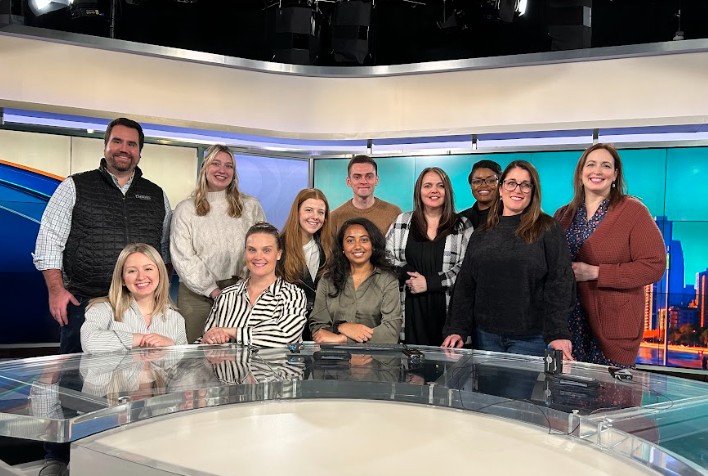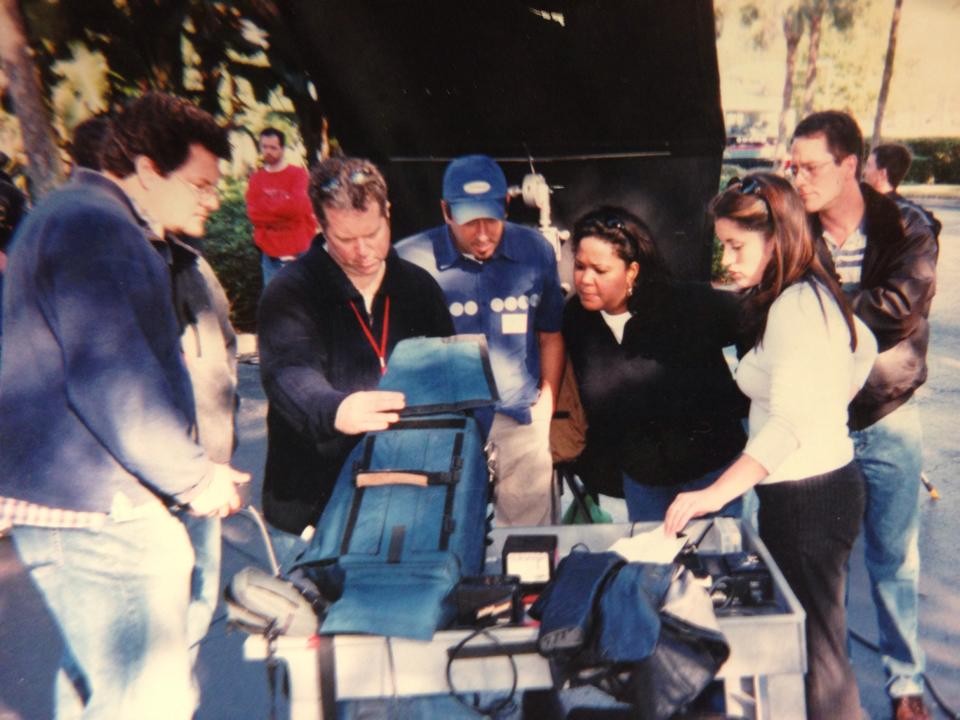We caught up with the brilliant and insightful Maia Brusseau a few weeks ago and have shared our conversation below.
Maia, looking forward to hearing all of your stories today. Let’s start with something countless entrepreneurs have had to figure out on the fly – how have you dealt with the rise of remote work?
Left Hand Agency is made up of a fully remote workforce. We don’t have a main office, and our employees live in every time zone in the contiguous US.
This set up works well for our agency. Aside from benefits like the lack of a stressful commute and fewer pop-ins from the “you got a second” people, this helps us better serve our clients. Many are located across the country and often have after-hours needs, and our dispersed team is able to provide quick responses and address needs no matter where they are located.
Because we are all separated by thousands of miles, team building is something we truly value and prioritize. We host an annual meeting where we all come together for a few days for training and bonding. Last year, I was worried the team would feel awkward meeting in person for the first time. At that point, we had only been working together for about four months. The result was the opposite. An outsider would have thought we were old friends or coworkers for a decade.
What we do is simple. We have daily calls with the entire team, so we can share updates and every few calls we include a simple ice breaker. Whether it’s your favorite ice cream or your favorite app, it helps get to know each other a bit more. Also, we have virtual happy hours. Sometimes it’s casual and we hang out on zoom, or we have activities planned meant to help us grow closer.
While we have had some bumps in the road along the way, we have found that good communication (you almost have to over-communicate in a remote environment) and project management techniques and software are imperative. Additionally, we regularly ask our team through surveys how we can better work together in this remote world and actually use that feedback to adjust how we work.


Maia, love having you share your insights with us. Before we ask you more questions, maybe you can take a moment to introduce yourself to our readers who might have missed our earlier conversations?
I am a creative that somehow stumbled into media buying. And, media buying means I basically get to spend other people’s money … but it’s more than that.
I started my career interning for a local television station in their marketing and promotions department. Eventually, I was hired as a full time employee. In a nutshell, my job was to write, edit and produce promos (commercials about the TV station) that invited viewers to watch our news. I LOVED it.
Moving through the ranks at that station and to other tv stations, I became a department manager and Creative Services Director. I oversaw the entire marketing department which included producer/writer/editors and graphic designers who worked on everything from commercials for clients to creating entire news graphics packages. I LOVED it.
Eventually, I burned out on the world of news and moved into public relations and marketing for an animal welfare organization (Yes, playing with puppies and kittens was literally part of my job!). I LOVED it.
I decided to take another break which turned into another shift in my career.
When my former coworker and friend called me and asked if I would be interested in working for her agency, it was an immediate yes! In my role now, I partner with people who do what I used to do and help create their outside media plans and strategy. I spend time in spreadsheets and I LOVE it!
Our agency prides itself in our top-notch customer service, because many of us have done the jobs our clients do. We are a modern media buying agency, which means we look at everything through the lens of digital first. That doesn’t mean we don’t place traditional media too. Our goal is to create plans that work for each of our clients’ unique needs.


Do you have any insights you can share related to maintaining high team morale?
Here’s the problem with most people managers, especially in the creative world. You get promoted to a leadership role because you’re good at what you do, but are not provided with tools on how to manage people. It’s an unfair position to put people in, because it’s often setting them up to fail.
Admittedly, I’ve made mistakes along the way, especially early on, but have learned from them.
My advice for anyone managing a team is to
1) Listen more than you talk. Get comfortable with silence and make room for people to speak up. This is especially important during creative brainstorming sessions. I once started a session by sharing an idea I had, then watched the room agree with me and add no other ideas. In the moment, I realized that I needed to let my team share their ideas before I spoke up with mine. Usually their ideas were SO MUCH better than mine, so it was worth it! Sometimes in leadership roles we think we are just contributing to the conversation, but our teams think that our “what ifs’ are actually final plans.
2) Respect people’s personal time. It’s important to respect boundaries, and to realize that some employees will not set them for themselves so it is up to you do so. If you’re working during hours in which they are not expected to, schedule emails or messages, and don’t call or text unless it’s absolutely necessary.
3) Allow time for fun and connection. Most of our jobs are high stress, so making time for fun is essential. Whether you’re a fully remote team hosting Zoom happy hours or an in-person team that takes an afternoon to all go bowling together (during work hours), it’s important to make time for the team to connect and have conversations with each other that are not work related. It creates deeper relationships and can be a lot of fun. Oh, and on this, don’t be the one who decides what fun looks like. Ask them what they’d like to do.

Have any books or other resources had a big impact on you?
I recently had the opportunity to see Jason Sperling speak at a conference. He’s the creative mastermind behind the Mac vs PC commercials that debuted back in 2006, among many other memorable ad campaigns. His book Creative Directions specifically addresses creatives who are transitioning into management roles. I don’t think there’s another book out there that zeroes in on this topic. It even talks about making time to continue doing the creative work you love after you’ve moved to a leadership role, which is something I think we all struggle with when we get promoted. It’s really a must-read for new creative managers!

Contact Info:
- Website: https://www.lefthandagency.com/
- Linkedin: https://www.linkedin.com/in/maia-brusseau/
Image Credits
no credits necessary


